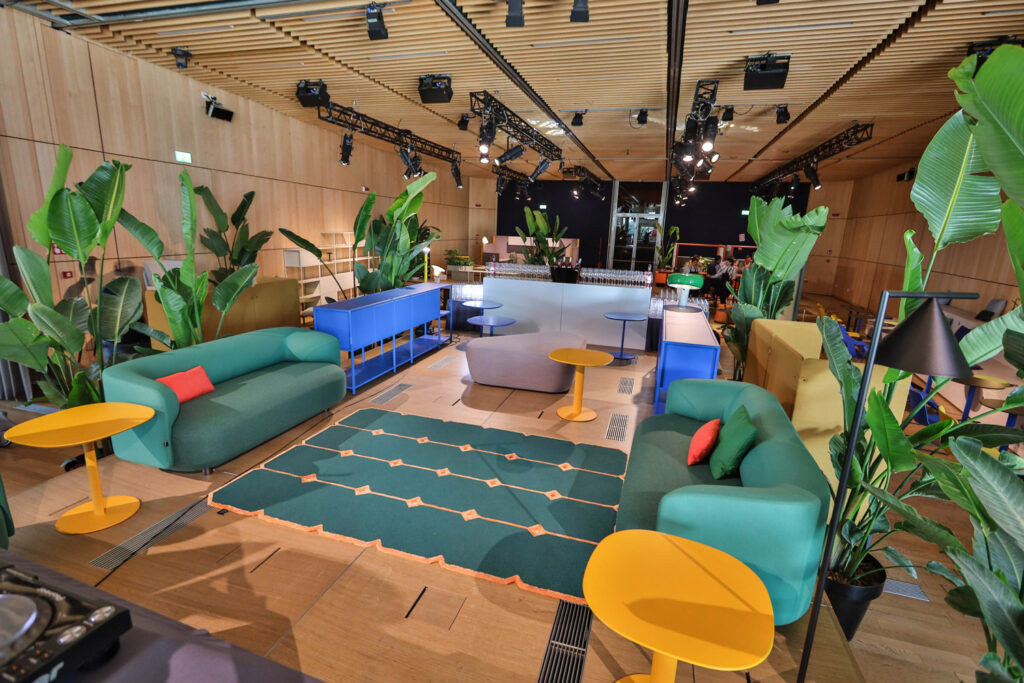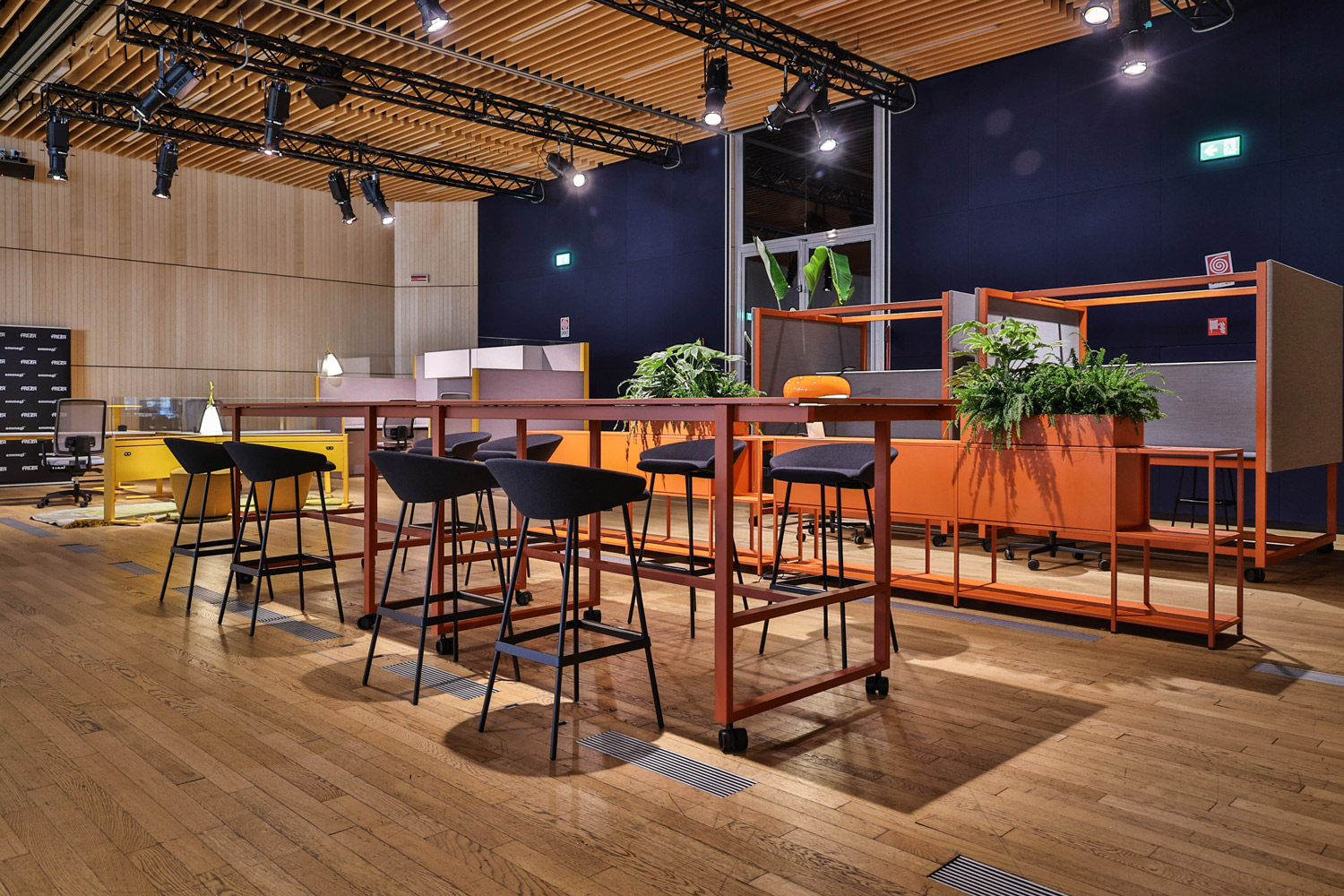Offices are often associated with a sterile and impersonal atmosphere, which can be uninspiring and uncomfortable. This is usually the case in environments that haven’t been renovated or updated for some time and are still based on the trends and needs of past decades.
Lockdown, together with the evolution of remote working and the advent of hybrid workplaces, have further accentuated this feeling: people are now seeking in their office all the comforts they have in their home offices or in co-working spaces that can now be found in all major cities.
This is where resimercial design comes into play, which is a trend that shows no sign of disappearing and continues to evolve over the years.
Companies that want to (re)attract employees to the office are doing their utmost to incorporate as many home-related elements as possible into work environments, in order to create a more welcoming and comfortable atmosphere with an ever-increasing focus on sustainability. In this article, we’ve collected some useful tips on the subject.
Designing space to improve comfort
When planning an office layout, it’s essential to carefully consider the way elements are arranged, assessing the needs of both individual work and teamwork spaces.
When choosing a resimercial approach, we must also think about what makes a home unique. When we’re home we have easy access to a kitchen for snacks, a bedroom for a bit of privacy, a living room for chatting, and often an outdoor space for a breath of fresh air: but what about the office?
Having areas such as a kitchen/work cafè, a lounge area, spare rooms and an outdoor space allows employees to manage their day independently, without limiting movement to the workstation.
This solution attempts to address some of the great criticisms that have been raised in recent years about open spaces: too noisy, too impersonal, lacking in privacy and sometimes so chaotic that it feels oppressive.

Improving well-being with sustainability (and some planning considerations)
Even if air quality cannot be seen, it inevitably affects productivity. Ensuring proper office ventilation can reduce the number of air pollutants and improve mood, as well as health. Plants are excellent allies in this regard, as they help purify the air: choosing them as furnishing accessories is an act that is both functional and aesthetic.
A great advantage that is often overlooked is access to outdoor spaces as a source of fresh air and a change of scenery. With the right outdoor furniture, even a small patio or balcony can make a real difference.
We mustn’t forget lighting. When working indoors all day, natural light can reduce drowsiness and eye fatigue, creating a more cosy, home-like environment. Designing a building so that it takes advantage of sunlight is also one of the main ways to reduce energy waste.
When designing a forward-thinking office, it’s crucial to take into account the comfort and well-being of employees. The aim is to create a space that not only meets work-related needs, but also offers a sense of warmth, welcome and comfort, enabling people to carry out their activities in a more enjoyable and fulfilling way.

